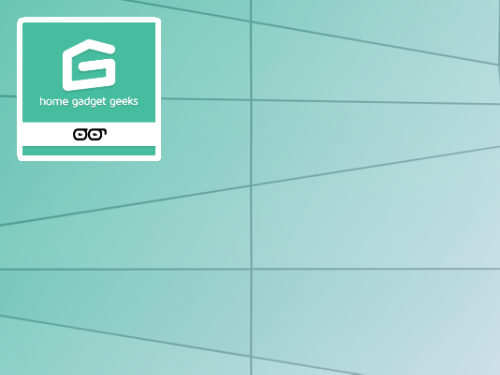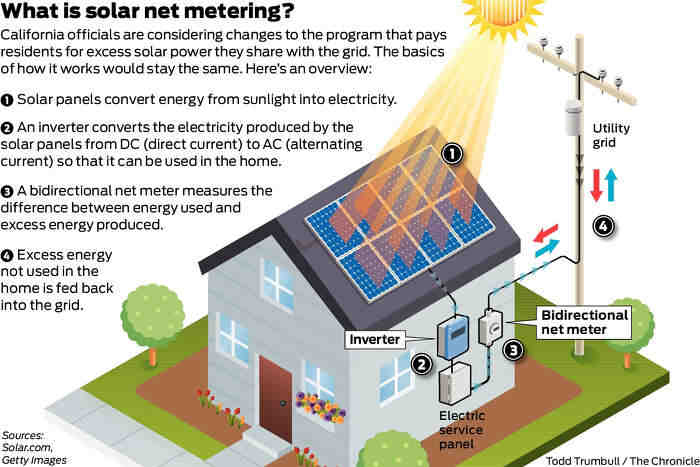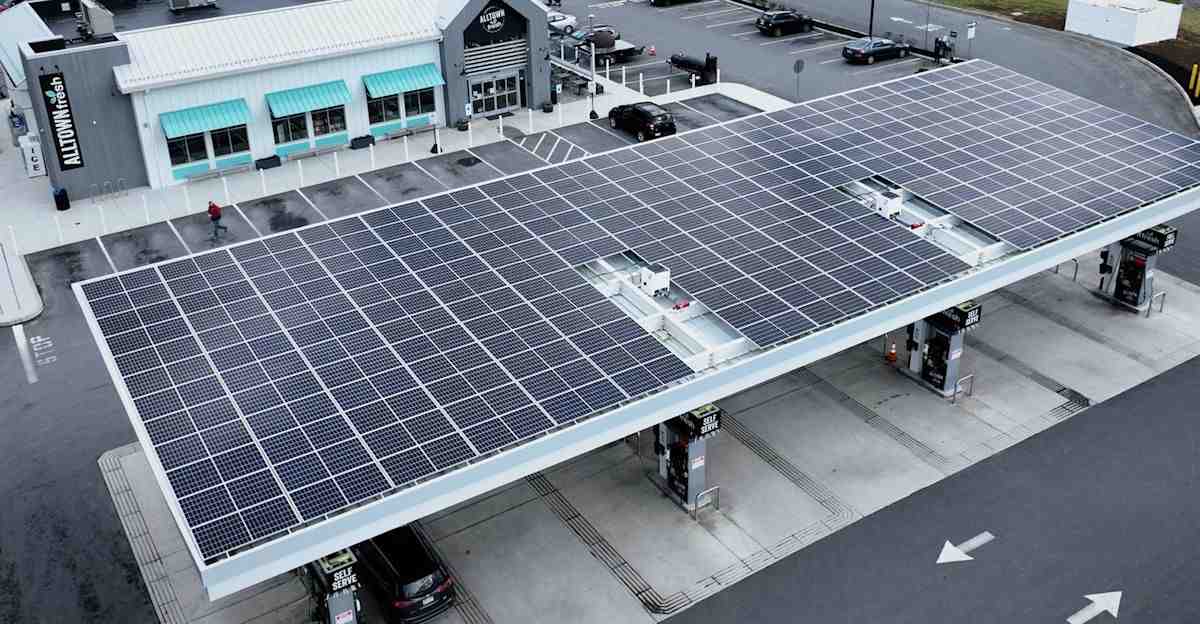One of the biggest thrills Lynn Krell and her husband experienced after installing solar panels on the roof of their home in Hattiesburg, Mississippi, was watching their electric meter run backwards as their electric utility billed them for the excess electricity they were using sold back to the grid.
Those credits also showed up on their electric bills and helped reduce their average monthly payments by $11 — on top of the roughly $250 they saved by using solar power during the peak summer months.
But eventually the Krells began to question the value of the credits. The Krells learned that Mississippi regulations allowed utility companies to purchase rooftop solar power for a small fraction of the retail price they charge to deliver that power back to customers’ homes. The Krells spoke to rooftop solar owners in other states, where more generous offsetting rules have allowed them to offset their entire electric bills.
“I’m royally ticked,” Krell, 63, said.
Mississippi, which gets plenty of sun, was one of the last states to give subsidies to people installing solar panels on their rooftops in 2015, and those subsidies remain among the stingiest in the country. Thirty-seven states refund full retail, but Mississippi offers significantly less. Experts say this is one of the reasons why rooftop solar systems have not caught on there. Only 586 Mississippi homes have the technology.
How to fix that is the subject of a dispute before the Mississippi Public Service Commission, which is considering rules that would expand subsidies for solar rooftops. The fight is one of several across the country that could determine the future of residential solar panels, which proponents say are crucial to weaning the power system of energy sources that emit carbon dioxide, a major cause of global warming.
Rooftop solar systems have “huge potential” to reduce air pollution, create jobs, protect against outages and reduce utility bills, said Mark Jacobson, professor of civil and environmental engineering at Stanford University. The technology will be critical for the US to make the transition to fully renewable energy by 2050, he said.
“It’s such a simple thing to put panels on people’s roofs,” Jacobson said. “We really shoot ourselves in the foot if we don’t.”
The question is who pays for it.
Almost every state offers some form of credit to rooftop solar owners who feed excess electricity into the grid. But as solar power is cheaper and more widely available, utilities in some states have pushed to curb payments, said Autumn Proudlove, senior policy program director at North Carolina State University’s NC Clean Energy Technology Center.
In Florida, the state’s largest utility persuaded lawmakers to vote to cut solar credits on the state’s rooftop, a measure that Gov. Ron DeSantis, a Republican, vetoed last week and said it would hurt consumers . In California, at the urging of utility companies, state regulators are considering cutting incentives for rooftop solar systems. In North Carolina, utility-backed proposals to change the state’s relatively generous subsidies for solar rooftops have divided environmentalists, with opponents saying the plan puts solar customers and installers at financial risk.
In Mississippi, the dispute pits environmentalists and solar companies against the state’s largest utilities, Mississippi Power and Entergy Mississippi, regional monopolies whose business models depend on building power plants and transmission lines that supply electricity to homes. Most of this electricity is generated by burning fossil fuels, but utilities are also expanding their own solar offerings. They have resisted competition from roof panels, in part by urging regulators to limit financial incentives for customers to install them, saying they are unfair to low-income customers.
“The utilities are kicking and yelling, yelling foul and saying this is awful,” said Louie Miller, the director of the Sierra Club in Mississippi. “They have a protected market. They’re a monopoly, for God’s sake. But there are people who want clean energy and the right to generate their own electricity.”
Representatives from Mississippi Power and Entergy Mississippi declined interview requests. In recent filings with the Mississippi Public Service Commission, the companies argued that sweetening solar subsidies would result in higher costs for customers who can’t afford solar panels.
“Rooftop solar arrays are not economical for the majority of customers, and any efforts by the commission to artificially improve those economics will be borne financially by the non-participating customers,” Mississippi Power said in a February filing.
This question remains unanswered. Some studies have supported the utility companies’ argument, while others have not. One conducted by Lawrence Berkeley National Laboratory in 2017 found that the impact of rooftop solar on electricity prices “is likely to remain negligible for the foreseeable future,” but that costs are rising in states with “exceptionally high” rates of rooftop solar adoption could.
Despite the efforts of solar installers and environmentalists, it seems unlikely that reimbursement rates for Mississippi rooftop module owners will increase. But utilities may need to offer other incentives.
In January, the Mississippi Public Service Commission proposed new rules that would add $3,000 in cash rebates for low- and middle-income customers who install rooftop solar panels. Mississippi Power argued against the rebates in a February filing with the commission; Entergy Mississippi, which has not opposed the rebates, said its acceptance depends on what the final rules say. The Commission is expected to vote on the change in the coming weeks.
What are the challenges with solar power?

Solar PV has challenges related to the uncertainty of how much solar radiation it would receive as the weather can change from time to time. This would prove difficult in determining how much energy to store for future use. See the article : What solar energy can be used for ?. Sunlight is clearly not available during the night hours while there is still a need for electricity.
What is the biggest challenge with solar energy? Simply put, the supply and demand charts don’t match. In fact, solar systems may need to be shut down during periods of peak generation when the energy cannot be stored or directed to hot water. If used for 20 to 25 years, as suggested by their warranty, solar panels can be a very clean form of energy.
What are 3 challenges of using solar energy?
The three challenges facing solar technologies today See the article : CCAC finds key to solar energy, adds 543-kilowatt solar system.
- oversupply. At some point everyone wanted to have their solar power generation system in their home. …
- local infrastructure. …
- Relative expensive. …
- Grid infrastructure in the US and your utility company.
What is the biggest challenge to the use of solar energy?
One of the biggest obstacles the solar industry has faced over the past year – and historically – has been public perception of the cost and effectiveness of solar energy. The general public mistakenly thinks that solar is much more expensive than it actually is and that it is not an effective technology.
How much do solar panels cost for a 1500 square foot house?
How much do solar panels cost for a 1,500 square foot house? Solar panels for a 1,500 square foot home cost about $18,500, with average prices in the US for 2020 ranging from $9,255 to $24,552.
How many solar panels do I need to power a 1500 square foot home? Solar Panels for a 1500 Square Foot Home The average home in the United States is approximately 1500 square feet. For a home this size, the typical electric bill is about $100 a month. To cover the electricity for this house, you would need an estimated 15-18 solar panels.
What are the 2 main disadvantages to solar energy?
Disadvantages of solar energy
- Costs. The acquisition costs for a solar system are relatively high. …
- weather dependent. Solar energy can still be collected on cloudy and rainy days, but the efficiency of the solar system decreases. …
- Solar energy storage is expensive. …
- Uses a lot of space. …
- Associated with pollution.
What is the main disadvantage of solar energy?
Reliability. A disadvantage of solar energy is that it relies on the sun and cannot generate electricity at night, so you must either store excess energy during the day or connect to an alternative power source such as the local grid.
How much do solar panels save for a 1500 square foot house?
According to one such estimate, a 1500 square foot house has an installed load of 6 kW. A survey shows that the cost of solar power panels ranges from $2.5 to $3.5 per watt. This way we can say that it takes 6000 * 2.5 = $15000 minimum and 6000 * 3.5 = $21000 maximum to power a 1500 square foot house.
How many solar panels do I need for a 1200 sq ft house?
| system size | Estimated monthly energy production | roof area required |
|---|---|---|
| 6kW | 720 – 900kWh | 330 square meters |
| 8kW | 960 – 1,200 kWh | 439 square meters |
| 10kW | 1,200 – 1,500 kWh | 549 square meters |
| 12KW | 1,440 – 1,800 kWh | 659 square meters |
What is solar and how does it work?
Solar technologies convert sunlight into electrical energy either through photovoltaic (PV) modules or through mirrors that concentrate solar radiation. This energy can be used to generate electricity or stored in batteries or heat storage.
Whats solar means?
Definition of Solar 1: of, derived from, relating to, or caused by the Sun. 2 : measured by the course of the earth in relation to the sun a solar year also : related to or calculated by solar time. 3a : generated or powered by exposure to sunlight or solar energy.
Do solar panels require a lot of maintenance?

Don’t fret! Solar panel systems are incredibly durable, requiring little to no maintenance throughout their productive lifespan, which can be 25 years or more. In the event that something goes wrong, your solar PV system components have very long warranties that would cover replacement and repair costs.
How long do solar panels last without maintenance? In general, solar panels last about 25-30 years. However, that doesn’t mean they stop producing electricity after 25 years – it just means that energy production has fallen by what manufacturers believe is a significant amount.
Are solar panels low maintenance?
Once installed, solar panels require very little maintenance. This is because there are no moving parts in the solar system. The only maintenance costs that are certain are the inverters, which are usually replaced after 15 years of operation of the system.
What are 2 problems with solar panels?
The environmental impacts associated with solar energy include land and water use and pollution, habitat loss, and the use of highly hazardous materials in the manufacturing process.
Do solar panels require annual maintenance?
Solar Panel Maintenance Costs A properly installed system will have little to no solar panel maintenance costs. Over the average lifetime of 25-30 years, there are few running costs for the overall system.
What are the maintenance costs of solar panels?
The nationwide average cost for routine solar panel maintenance ranges from $140 to $180, but warranties cover the cost of many services. The service you’re most likely to need is an annual inspection, which costs an average of $150 statewide.
How often do solar panels need maintenance?
In general, it is recommended to carry out the solar panel cleaning two to four times a year. While that may seem like a lot, the good news is that it doesn’t require a lot of work. All you really need is a leaf blower or a quick spray with a garden hose and your panels will be clean and in tip-top condition.
How much maintenance is required for solar panels?
Most panels are made of tempered glass, anodized aluminum, and (aside from tracking arrays) have no moving parts. So convenient that they require little to no maintenance. Your friends at Solar.com recommend cleaning your panels every 3 months to ensure maximum efficiency.
How much does it take to maintain solar panels?
How much does solar panel maintenance cost? The nationwide average cost for routine solar panel maintenance ranges from $140 to $180, but warranties cover the cost of many services. The service you’re most likely to need is an annual inspection, which costs an average of $150 statewide.
Is it difficult to maintain the solar panels?
Solar panels are not difficult to maintain. Specially designed for outdoor use, they are designed to withstand all weather conditions. However, they must be cleaned every year as dust, bird droppings and leaves can stick to them, which can reduce their effectiveness.
Does solar energy require low maintenance?
They have no moving parts. It’s a simple principle of mechanics: more parts, more problems. Solar power systems consist of relatively few parts, and none of them move. This is one of the main reasons why solar power systems are low-maintenance.
Are solar panels a good investment in 2021?

Are solar panels worth it in 2021? The short answer: yes. Today’s rooftop solar systems are elegant and can be integrated into the design of your home while still allowing you to produce your own energy.
What are the 2 main disadvantages of solar energy? Disadvantages of solar energy
- Costs. The acquisition costs for a solar system are relatively high. …
- weather dependent. Solar energy can still be collected on cloudy and rainy days, but the efficiency of the solar system decreases. …
- Solar energy storage is expensive. …
- Uses a lot of space. …
- Associated with pollution.
Is solar a good investment 2022?
There is currently a 26% state solar tax credit known as the Investment Tax Credit (ITC) available to all homeowners who install residential solar panels between 2020 and 2022. That means 2022 is pretty much your last chance to capitalize on the 26%. tax incentive.
Will solar panels get cheaper in 2022?
According to a study by solar analyst Ben Gallagher by GTM Research, solar energy is becoming significantly cheaper worldwide. He predicts the price of building solar power technology will fall 4.4 percent each year, meaning project prices will have fallen 27 percent by 2022.
Does solar energy have a good future?
Solar is booming. Solar power is now cheaper than coal in some parts of the world, and generating electricity from the sun is likely to be the world’s cheapest energy option in less than a decade, according to Bloomberg.
Does it make financial sense to go solar?
Homeowners who install solar power systems can reap numerous benefits: lower utility bills, reduced carbon footprint, and potentially higher home values. However, these benefits usually come with significant installation and maintenance costs, and the magnitude of the gains can vary widely from house to house.
What is the cost of solar energy in 2021?
According to a recent report from the Solar Energy Industries Association, the national average cost of a residential solar installation was $2.94 per watt in the first quarter of 2021.
Is the cost of solar energy going down?
Installation costs for photovoltaic (PV) and battery storage systems in the U.S. continued to decline between 2020 and 2021, with utility-scale solar systems seeing a 12.3% price drop, according to a new report from the National Renewable Energy Laboratory (NREL).
What are the costs of solar energy?
The cost of a solar electric system is measured in dollars per watt. The average cost for a home system is currently $3-5 per watt. That means the average 5kW residential system will cost $15,000 to $25,000 before tax credits or incentives.
How much do solar panels save in 2021?
Because of the current federal tax credit for renewable energy systems (26% of total system and installation costs), most customers will save over $3,000 by switching to solar in 2021 or 2022. So the actual customer cost of installing solar panels is between $10,000 and $14,000 (depending on the state) — a national average of $12,000.
How much do solar panels save in 2021?
Because of the current federal tax credit for renewable energy systems (26% of total system and installation costs), most customers will save over $3,000 by switching to solar in 2021 or 2022. So the actual customer cost of installing solar panels is between $10,000 and $14,000 (depending on the state) — a national average of $12,000.
Do you actually save money going solar?
Solar panels not only help the environment by reducing greenhouse gas emissions, but allow you to keep more money in your bank account every month. You’ll save by using less electricity, a saving that kicks into high gear once you’ve cut enough electricity bills to recoup installation costs.
Will solar panels get cheaper in the future?
Bloomberg and its 65 market specialists forecast that overall solar costs will fall by about 34% by 2030. While that’s not quite the 80% drop we saw from 2000 to 2020, it shows that the cost of switching to solar is still falling in a downward direction.

